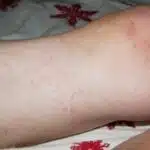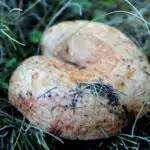Mud stains on clothing can be a frustrating and stubborn issue to deal with, especially when they are deeply embedded in the fabric. As a laundry care expert, I often come across clients who struggle with mud stains on their clothes and seek my advice on how to effectively remove them without causing damage to the garment.
Mud is a common outdoor element that can easily cling to clothing during outdoor activities such as hiking or gardening. It contains a mixture of soil, dirt, and water which can create an unsightly stain if not treated immediately. If you’re someone who enjoys spending time outdoors or has kids who love playing in the dirt, it’s essential to know how to properly remove mud stains from clothing without damaging the fabric. In this article, we’ll discuss some effective tips and tricks for getting rid of mud stains and restoring your clothes back to their original state.
Understanding The Science Behind Mud Stains
Mud stains can be a real hassle to remove from clothing. However, understanding the science behind mud stains is key to getting rid of them. One of the essential factors to consider when it comes to mud stain removal is the importance of pH balance. The pH scale ranges from 0-14, with 0 being highly acidic and 14 being highly alkaline. Most detergents are designed to work in neutral or slightly alkaline conditions, so maintaining an appropriate pH level is crucial for effective stain removal.
Another critical element in removing mud stains is the role of enzymes in stain removal. Enzymes are proteins that act as catalysts in breaking down complex molecules into simpler ones, making them easier to remove. There are different types of enzymes that target specific components of a stain, such as protein-based enzymes for food stains and lipase for grease stains. When it comes to mud stains, proteases are particularly helpful because they break down the protein molecules found in dirt and grass.
To effectively remove mud stains, it is crucial to use detergents that contain the appropriate enzymes while also maintaining a balanced pH level (around 7). While some may opt for natural solutions like vinegar or lemon juice, these may not always be effective due to their varying acidic levels and lack of specific enzymes targeting mud stains. In the next section, we will discuss pre-treating techniques that can help further break down stubborn mud stains before washing.
Pre-Treating Mud Stains
Stain prevention is always the best strategy when it comes to mud stains. Before wearing clothes in muddy areas, apply a stain-resistant spray or coating. This will make it harder for mud to stick and will help prevent stains from forming. If you are caught off guard by a mud stain, pre-treating the stain before washing can be effective.
When pre-treating mud stains, start by removing any excess mud with a soft-bristled brush or spoon. Avoid rubbing the stain because this can push the mud deeper into the fabric and make it more difficult to remove. Then, apply a pre-treatment solution directly onto the stain. There are many commercial pre-treatment products available on the market that are specifically designed for mud stains. Alternatively, you can use a mixture of equal parts liquid laundry detergent and water as an effective DIY solution.
Mud stain removal requires patience and persistence. After applying pre-treatment solution, allow it to sit on the stain for at least 15 minutes before washing. Wash your clothes in cold water using laundry detergent, preferably one that is formulated for tough stains. Check the care label on your clothes before washing to ensure that they can be washed in cold water without damage. Once washed, check if the stain has been removed completely before drying; otherwise, repeat these steps until you get rid of all traces of mud stains.
Transition: Now that we have addressed how to effectively pre-treat mud stains let’s move on to discussing how soaking stained clothing can help break down stubborn dirt and grime marks further.
Soaking The Stained Clothing
After pre-treating the mud stain, it’s time to move onto soaking the clothing item. Soaking is an effective way of loosening and removing stains that may not have come out through pre-treatment alone. There are various soaking techniques available, each with its own benefits depending on the type of fabric and severity of the stain.
One popular soaking technique involves using cold water and a gentle detergent. Simply fill a bucket or sink with cold water and add a small amount of detergent. Mix well until suds form, then submerge the stained clothing item and let it soak for at least 30 minutes. For more stubborn stains, you can increase the soaking time up to several hours or even overnight. This soaking technique is gentle enough to use on delicate fabrics while still being effective in removing tough stains.
When it comes to time management strategies for soaking, it’s important to plan ahead. If you know you will be dealing with a particularly difficult stain, try to start the soaking process as soon as possible after the stain occurs. This will give the detergent plenty of time to work its magic before you begin washing the clothing item. Additionally, if you are dealing with multiple stained items, consider grouping them together based on their severity so that they can soak for different lengths of time without becoming over-soaked or damaged.
Moving forward, using stain-removing products can be a helpful tool in getting rid of stubborn mud stains from clothing items. However, it’s important to carefully follow instructions and test any products on an inconspicuous area before applying them directly to the stained area. With these techniques and strategies in mind, you can effectively remove mud stains from your favorite clothing items without damaging them in the process.
Using Stain-Removing Products
Stain-Removing Products: When it comes to removing mud stains from clothing, there are a variety of stain-removing products available in the market. These products can be used to remove stubborn stains and restore the original color of the fabric. Some common types of stain-removing products include laundry detergents, stain removers, and pre-treatment sprays.
Laundry detergents are one of the most common stain-removing alternatives used by people. They can be used as a standalone product or in combination with other stain-removing products. Stain removers are another popular option that is designed specifically to remove tough stains like mud, grease, and oil. Pre-treatment sprays can also be used before washing clothes to break down the dirt particles and make it easier to remove the stains.
Eco-Friendly Options: If you’re looking for eco-friendly options for removing mud stains from your clothing, there are several alternatives available in the market. Some of these options include using natural ingredients like vinegar, lemon juice, or baking soda as a pre-treatment solution. You can also make your own eco-friendly stain remover by combining natural ingredients like baking soda and hydrogen peroxide. These options not only help you save money but also reduce your carbon footprint.
Creating Your Own Stain Remover: Creating your own stain remover is an excellent way to save money and avoid harsh chemicals that can harm the environment. To create your own stain remover, you will need some basic ingredients like baking soda, hydrogen peroxide, and dish soap. By mixing these ingredients in specific proportions, you can create an effective stain remover that works on all types of fabrics. This homemade solution not only removes mud stains but also helps keep your clothes looking fresh and clean without damaging them.
Creating Your Own Stain Remover
As a laundry care expert, I recommend DIY stain remover as an eco-friendly alternative to store-bought products. These homemade solutions not only remove stains effectively but also reduce the use of harmful chemicals that are present in commercial products. Additionally, DIY stain removers are cost-effective and easy to make using ingredients that are readily available at home.
To create your own stain remover, you can use simple ingredients such as vinegar, baking soda, hydrogen peroxide, and dish soap. These ingredients have powerful cleaning properties and can be mixed together in different combinations to tackle various types of stains. For instance, a mixture of vinegar and baking soda can be used to remove mud stains from clothing. Whereas a combination of hydrogen peroxide and dish soap is ideal for removing tough food stains.
Using eco-friendly alternatives not only benefits the environment but also helps you save money in the long run. To illustrate this point, let’s take a look at the table below:
| Product | Price | Size |
|---|---|---|
| Store-bought stain remover | $7.99 | 16 oz |
| Homemade stain remover | $2.50 | 32 oz |
As you can see from the table above, creating your own stain remover costs significantly less than purchasing store-bought products. Moreover, by reusing empty spray bottles or containers from around your home, you can further reduce waste while still maintaining effective cleaning power.
Transitioning into the subsequent section about using baking soda for tough stains: Another effective ingredient that can be used in DIY stain removers is baking soda. This versatile substance has been used for generations as a natural cleaning agent due to its abrasive nature and alkaline pH level. In the following section, we will explore how baking soda can be used to remove tough stains from clothing without damaging the fabric or causing discoloration.
Using Baking Soda For Tough Stains
Baking soda is a versatile household ingredient that can be used for many purposes, including as a solution for tough stains on clothing. Its benefits include being non-toxic, inexpensive, and readily available. When combined with other alternative cleaning methods, such as vinegar, baking soda can become an effective solution to remove even the most stubborn mud stains from your favorite clothes.
To use baking soda for tough mud stains, start by mixing 1 part baking soda with 2 parts water to create a paste. Apply the paste onto the stained area of the garment and let it sit for at least 30 minutes. Once the time has passed, rinse off the paste with cold water and check if the stain has disappeared. Repeat this process until the stain is completely removed.
Another alternative cleaning method that works well with baking soda is vinegar. Vinegar is a natural cleaning agent that can help break down tough stains and odors on clothing. To use vinegar in combination with baking soda, mix equal parts of both ingredients to create a foamy mixture. Apply this mixture onto the stained area of your garment and let it sit for about 15-20 minutes before rinsing it off with cold water.
As mentioned earlier, combining baking soda with other natural cleaning agents like vinegar can greatly enhance its effectiveness in removing mud stains from clothing. In the next section, we will discuss how applying vinegar as part of a natural cleaning routine can help you keep your clothes looking fresh and clean without using harsh chemicals or damaging fabrics.
Applying Vinegar For Natural Cleaning
Having learned about the benefits of using baking soda for tough stains, it’s time to move on to another natural cleaning solution that can effectively remove mud stains from clothing. Vinegar is a versatile household item that has been used for cleaning purposes for centuries. Not only is it effective in eliminating dirt and grime, but it’s also an eco-friendly and affordable alternative to chemical-based cleaners.
One of the main benefits of vinegar for cleaning is its acidic properties. This makes it an effective cleaner for removing stubborn stains like mud, grease, and even wine stains. Vinegar can also help to neutralize odors and sanitize surfaces, making it a great all-purpose cleaner for use around the home.
Aside from its cleaning properties, vinegar has several other uses around the home. It can be used as a fabric softener in the laundry, a natural weed killer in the garden, and even as a homemade drain cleaner. Its versatility and affordability make it an essential item to have in your household cleaning arsenal.
Incorporating vinegar into your laundry routine can be a game-changer when it comes to removing tough stains like mud. However, if you’re looking for an extra boost of freshness, consider using lemon juice as a natural scent booster. Lemon juice not only adds a fresh scent to your laundry but also helps to brighten whites and remove discoloration from fabrics. Stay tuned for our next section on how to incorporate lemon juice into your laundry routine!
Using Lemon Juice For A Fresh Scent
Lemon juice is a natural alternative to harsh chemicals when it comes to freshening the scent of your laundry. Not only does it provide a refreshing citrus aroma, but it also has benefits for cleaning your clothes. Citrus fruits contain citric acid, which can help break down dirt and grime on clothing.
One benefit of using lemon juice for laundry is that it can help remove stains. Simply apply lemon juice directly onto the stain before washing as usual. Another benefit is that it can act as a natural fabric softener, leaving your clothes feeling soft and smelling fresh.
If you don’t have access to lemon juice or prefer not to use it, there are other citrus alternatives such as orange and grapefruit juice that can also provide similar benefits for your laundry. These options are ideal for those who prefer natural cleaning methods over chemical-based products.
Next, we will discuss how using hydrogen peroxide can deep clean your clothes without damaging them. Incorporating this step into your laundry routine can help keep your clothes looking new while removing tough stains and odors.
Using Hydrogen Peroxide For Deep Cleaning
Hydrogen peroxide is a popular household cleaning agent that can be used for deep cleaning. It is known for its ability to remove stubborn stains, such as mud stains from clothing. However, there are also hydrogen peroxide alternatives that you can use if you prefer not to use this chemical.
When using hydrogen peroxide for deep cleaning, it is important to take precautions. This chemical can cause skin irritation and damage to your eyes if it comes into contact with them. Therefore, it is important to wear gloves and protective eyewear when handling hydrogen peroxide. You should also keep it out of reach of children and pets.
While hydrogen peroxide can be effective in removing mud stains from clothing, it is not always the best solution. In some cases, using hot water and detergent may be just as effective. Additionally, using hot water may be a better option in situations where the fabric cannot withstand the bleaching effect of hydrogen peroxide. Before deciding on which method to use, consider the type of fabric you are dealing with and assess the severity of the stain.
To avoid further setting in mud stains when treating your clothes with cold water or hydrogen peroxide, avoid hot water at all costs! Using hot water will set the stain permanently into the fabric making it difficult or sometimes impossible to remove later on. Instead opt for lukewarm or cold water when rinsing out mud stains from clothes before applying any treatments like Hydrogen Peroxide Alternatives or regular laundry detergent. By following these simple steps you will find that your clothes will come out cleaner than ever before!
Avoiding Hot Water For Mud Stains
The sight of mud stains on clothing can be frustrating and unpleasant. It’s natural to want to wash them out as quickly and effectively as possible. However, it’s important to take care when treating mud stains, as hot water can actually set the stain and make it more difficult to remove.
Using cold water for treating mud stains has many benefits over hot water. Cold water helps prevent the stain from setting into the fabric, which makes it easier to remove. In contrast, hot water sets in stains, making them harder to eliminate completely. Additionally, using cold water in your laundry routine is better for the environment as it requires less energy than heating up hot water.
There are dangers associated with using hot water for mud stains that go beyond just setting the stain. Hot water can also damage delicate fabrics or cause shrinkage in certain types of materials. To avoid these issues altogether, stick with cold water for all your laundry needs.
Alternative cleaning methods like using vinegar or baking soda can be effective at removing stubborn mud stains without resorting to hot water. These products are gentle yet powerful cleaners that won’t harm your clothing while still getting rid of dirt and grime. Experiment with different methods until you find one that works best for you and your specific needs.
Moving forward, choosing the right detergent is crucial when washing clothes with mud stains. By selecting a product designed specifically for tough stains, you’ll increase your chances of success in removing them completely without damaging your clothing. With patience and persistence, you can easily remove even the toughest mud stains from your favorite garments while keeping them looking their best for years to come.
Choosing The Right Detergent
When it comes to removing mud stains from clothing, choosing the right detergent is crucial. There are many options available in the market, but not all of them are effective in removing stubborn mud stains. Eco-friendly detergents have become increasingly popular in recent years, and they are a great option for those who want to minimize their impact on the environment while still getting their clothes clean. These detergents use natural ingredients that are gentle on fabrics and do not contain harsh chemicals that can damage or fade colors.
Fragrance-free detergents are also an excellent choice for removing mud stains from clothing. They do not contain any artificial fragrances or dyes that can irritate sensitive skin or cause allergic reactions. Fragrance-free detergents are also less likely to leave residue on clothing, which can attract dirt and make future stains more difficult to remove. When selecting a fragrance-free detergent, look for one that is specifically formulated for removing stains.
In summary, choosing the right detergent is essential when it comes to getting mud stains out of clothing. Eco-friendly options and fragrance-free options are both excellent choices for those who want effective stain removal without harming the environment or irritating their skin. By selecting a high-quality detergent and following proper laundering instructions, you can ensure that your clothes stay clean and fresh-looking no matter what kind of messes you encounter throughout your day. Next, we will discuss another important tool in your laundry arsenal: using a stain stick for on-the-go cleaning.
Using A Stain Stick For On-The-Go Cleaning
Did you know that the average American family does eight to ten loads of laundry per week? That’s a lot of stains to remove! When it comes to mud stains, they can be particularly stubborn and difficult to get out. But fear not, there are portable alternatives that can help you remove those pesky mud stains on-the-go.
Here are five eco-friendly options for using a stain stick:
- Look for natural ingredients like plant-based surfactants and essential oils.
- Choose a formula that is free from harsh chemicals like bleach or ammonia.
- Consider purchasing a refillable stain stick instead of single-use disposable ones.
- Opt for packaging made from recycled materials or choose a plastic-free option.
- Support companies that prioritize sustainability in their manufacturing processes.
A stain stick is an excellent tool for removing mud stains when you’re out and about. However, it’s important to use it correctly. First, wet the stained area with water. Then apply the stain stick generously and let it sit for at least five minutes before washing the item as usual.
Now that you’ve used a stain stick to treat your mud-stained clothing, it’s time to brush out any remaining residue. But how do you do this effectively without damaging the fabric? Stay tuned for our next section where we’ll discuss the best techniques for brushing out stubborn stains.
Brushing The Stain Out
When it comes to removing mud stains from clothing, brushing out the stain is an effective way to tackle the problem. However, using the wrong type of brush or technique can cause further damage to the fabric. Therefore, it is important to understand which brushes are suitable for this task and how to use them correctly.
The two types of brushes that work best for brushing out mud stains are soft-bristled brushes and stiff-bristled brushes. Soft-bristled brushes, such as toothbrushes or dishwashing brushes, are ideal for delicate fabrics like silk or cashmere. Stiff-bristled brushes, such as scrubbing brushes or nail brushes, work better on sturdier fabrics like denim or canvas. Before using any brush, be sure to remove any excess dirt or mud from the garment with a gentle shake or tap.
When brushing out a mud stain, it is important not to spread the stain further into the fabric. To prevent this from happening, start brushing from the outside of the stain and work your way towards the center. Use short strokes in one direction rather than rubbing back and forth. Also, avoid applying too much pressure as this can push the stain deeper into the fabric fibers. Once you have brushed out as much of the stain as possible, proceed with washing according to care instructions.
Transition: Now that you have successfully removed as much mud as possible by brushing out the stain, let’s move on to air-drying your clothing properly.
Air-Drying The Clothing
Once you have removed the mud stains from your clothing, the next step is to dry it properly. While many people may be tempted to use a dryer to speed up the drying process, air-drying is always the best option for delicate fabrics and those that may have shrunk or lost their shape after washing. One of the benefits of line drying is that it allows air to circulate around the fabric, which helps to prevent wrinkles and reduces static cling.
To air-dry your clothing after removing mud stains, start by gently wringing out any excess water from the garment. Avoid twisting or pulling too hard as this can damage delicate fabrics or cause them to lose their shape. Instead, roll the garment in a towel and press down gently to remove any remaining moisture. Then hang the clothes on a clothesline or drying rack in a well-ventilated area away from direct sunlight.
While air-drying is generally safe for most types of fabrics, there are some tips you should keep in mind to prevent shrinkage. For instance, avoid hanging heavy items like jeans or towels on thin clotheslines as this can cause them to stretch out of shape. Additionally, do not place wet clothing on top of each other when hanging as this can also lead to stretching and distortion. By following these simple tips, you can ensure that your clothing will dry evenly without losing its shape or shrinking unnecessarily.
Transition: Now that you know how to properly air-dry your clothing after removing mud stains, it’s time to learn how to prevent future stains from occurring in the first place.
Preventing Future Mud Stains
While air-drying your mud-stained clothing is an effective way of removing the stains, it’s essential to take preventive measures to avoid future stains. Mud stains can be stubborn and challenging to remove, but with the right techniques and tools, you can protect your clothes from damage.
One of the best ways to prevent mud stains is by choosing proper footwear while walking in muddy areas. Wearing rubber boots or shoes with deep treads will help reduce the amount of mud that sticks to your shoes and ultimately ends up on your clothes. Additionally, it’s essential to avoid walking through large puddles as they are usually deeper than they appear and may contain sharp objects that could cause harm.
Investing in mud stain-resistant clothing is another effective way of preventing future stains. Mud-resistant fabrics such as Gore-Tex and nylon are excellent for outdoor activities because they repel water and resist staining. These materials are also easy to clean, which makes them perfect for outdoor enthusiasts who spend a lot of time in muddy areas.
To sum up, taking precautions such as wearing proper footwear and investing in mud stain-resistant clothing is crucial for preventing future mud stains. By following these tips, you can ensure that your clothes remain clean and free from damage caused by stubborn mud stains.
Conclusion
Mud stains on clothing can be a challenging problem to solve, but with the right techniques and tools, you can effectively remove them. The first step is to understand the science behind mud stains and how they penetrate fabric fibers. Pre-treating the stain by scraping off excess mud and applying a stain-removing product can help loosen the dirt before soaking it in cold water.
For tougher stains, creating your own stain remover or using a stain stick for on-the-go cleaning may be necessary. Once the stain has been treated, brushing it out and air-drying the clothing can prevent further damage. To prevent future mud stains, consider washing dirty clothes as soon as possible and avoiding muddy areas altogether.
As a laundry care expert, I encourage you to take proper care of your clothing by following these steps to remove mud stains effectively. Remember that different fabrics require different treatment methods, so always read care labels before attempting any cleaning process. With patience and persistence, you can restore your clothes to their original condition and enjoy them for years to come.
Image Credits
- “Stained mud window at Oxford Museum of Modern Art” by Shakespearesmonkey (featured)





























